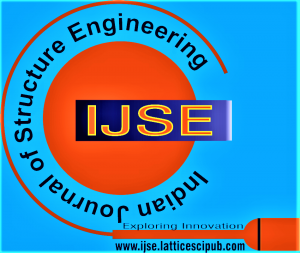Micro Structural Properties of Ternary Blended Concrete
Gomasa Ramesh
Gomasa Ramesh, Department of Civil and Structural Engineering, Vaagdevi College of Engineering, Warangal, 506005, Telangana, India.
Manuscript received on 11 May 2021 | Revised Manuscript received on 13 May 2021 | Manuscript Accepted on 15 November 2021 | Manuscript published on 30 November 2021 | PP: 33-36 | Volume-1 Issue-2, November 2021 | Retrieval Number: 100.1/ijse.B1312111221 | DOI:10.54105/ijse.B1312.111221
Open Access | Ethics and Policies | Cite | Mendeley | Indexing and Abstracting
© The Authors. Published by Lattice Science Publication (LSP). This is an open-access article under the CC-BY-NC-ND license (http://creativecommons.org/licenses/by-nc-nd/4.0/)
Abstract: The sum of CO2 that has been released into the atmosphere is roughly equal to the amount of cement produced. Cement manufacturing now consumes many natural resources and cement substitute materials in the analysis of Micro Structural Properties of Ternary Blended Concrete. The mixed proportion in this analysis is made of M30 Concrete. The cement is substituted with a mixture of two materials in amounts ranging from 10% to 50%. For the mix of materials, Fly Ash is kept constant. The specimen is a 150mmx150mmx150mm cube, and the concrete is cast in a 150mmx300mm cylinder. The cast specimens are held for 28 days to cure. Compressive and split tensile strength tests are used to achieve the results. The combination at 10%, at 20%, at 20%, and 20% produced better strength results in all proportions from 10% to 50%. Besides, scanning electron microscopy techniques were used to understand better phase changes and the formation of microstructures to maturing the combination of materials at various percentages. SEM was used to evaluate the microstructure of the concrete for five different varieties, which helps with solid growth. With the highest compressive strength gained among all the mixes from 10% to 50% with combinations for M30 grade of concrete at 28 days, significant innovative information on particle shape and microstructure was observed. Via SEM study, a good correlation of this Microscopical quantitative knowledge and material properties is also presented.
Keywords: Ternary Blended Concrete, Micro Structure Properties, Properties of Materials, Applications, Silica fume, High strength concrete, Nano Alumina.
Scope of the Article: Structural
